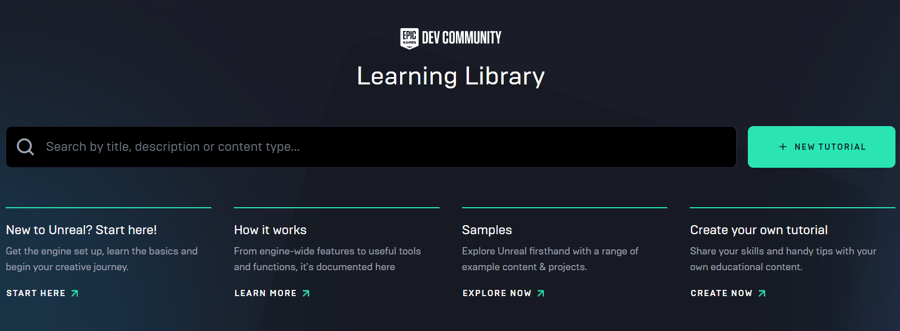
Customer education is becoming a high priority in business technology, especially for SaaS (Software as a Service) companies. The pace of advancement in business technology is rapid. New software and hardware options are always appearing, leaving even the most tech-savvy consumers confused.
Developing a relationship of trust with your customer is essential for B2B and B2C businesses. When you contribute to your customer’s success with your product, you build trust with your users.
A lack of understanding of a product can seriously harm a business customer’s digital transformation efforts. In today’s market, it’s more vital than ever that companies proactively engage users with education resources.
What Do We Mean by Customer Education?
Any material you use to help your customers get the most out of your service is a part of your customer education strategy. Your how-to guides, FAQs, webinars, and so on all contribute to training your customers.
This is especially useful for businesses that have products with a steep learning curve. Those whose products have multiple functions or frequent updates can also benefit. A good example would be B2B communications software.
Let’s say you’re a SaaS business operating a hosted phone system. Your clients would need staff training on how to use the system. How you coordinate this training and the resources you provide make up your customer education program.
Why is Educating Your Customers So Important?
From the example above, you can see why educating customers is important. Proper training is necessary if you want your clients to get results with your service. Your ability to provide training and support will directly affect your adoption and retention rates.
Refining your customer training strategy is essential too. If your product is complex, you probably spend a lot on sending in-person trainers to customers or client businesses. Turning training materials into self-service online resources can help reduce training budget costs.
Setting out an education plan lets you separate the primary information that all users need from the more niche user demands. Everyone needs to know how to access your CRM system, for example, but only a few users need to understand how your Hubspot CRM integrations work.
The Benefits of Creating a Customer Education Program

Source: Conductor
Educating your customers helps your business grow in the long term. Informed customers are more engaged and willing to trust your business, which is an integral part of customer loyalty.
Better Adoption & Retention Rates
An often-overlooked part of onboarding is the concept of “time to value” (TTV). This is how long it takes your customer to see value in your product. Depending on the complexity of your product, this could be a significant factor in deciding whether customers adopt it.
Of course, you want to keep your time to value as short as possible. However, some products have a learning curve. That means you can’t shorten the TTV beyond a certain point. That’s where your customer education materials will provide the most value.
You can remove friction from the adoption process if customers have access to on-demand resources or live support. Having ready-made answers when customers need help will drive up adoption rates — even for the most complex software.
When you help customers to get value from your product, you’ll also boost retention. Customer experience is a highly competitive part of online business today. A supportive learning environment can provide extra touchpoints to connect with your customer.
You can proactively reduce customer pain points with the right educational materials. This will help you provide a consistently high level of customer experience.
Higher Customer Satisfaction & Reduced Support Workload
Customer satisfaction is a vital metric for most businesses. High customer satisfaction scores lead to more repeat business and customer loyalty. Customer satisfaction increases when problems are resolved in a single interaction.
When you have easily accessible training resources, you cut down on all those repeated emails and calls that take up so much of your support staff’s time. Combine this with well-trained staff with deep product knowledge, and you can resolve most customer queries the first time.
This recent Khoros study revealed that 83% of customers feel more loyalty to brands who respond to and resolve their complaints. This shows that queries and complaints can be an asset for customer loyalty if handled correctly. Your customer education plan enables this.
Scalable Training Programs
If you’re in a B2B industry, your complex product may require you to train your clients. The problem with in-person training is that it can be challenging to scale. It quickly becomes impractical if your client has multiple offices or many remote workers. Creating a customer education program with digital assets will let you get around this problem.
When you’re educating a broad customer base, like in B2C industries, you’ll have to recognize that people learn in different ways. Having on-demand digital assets like webinars, tutorial videos, and how-to guides lets customers learn at their own pace. This will help you keep up with training demands as you scale your business.
How to Create Your Own Customer Education Strategy

Source: Conductor
Creating your customer education strategy isn’t that difficult. You already have product knowledge within your business. You’ve trained your staff, and you can also use those same principles to train your customers.
However, you need to be aware of the types of users you’ll be educating. This will determine the best types of training materials to use and the best channels to deliver them through. Using a visualization method called the Risk-Scale Matrix can help with this.
User Types: The Risk-Scale Matrix
The Risk-Scale Matrix looks at two major factors that impact adoption. Risk refers to the severity of errors and mistakes with the product; what’s the risk if something goes wrong? Scale refers to the breadth of adoption; do you have many unskilled users or a few specialists?
This creates four broad categories into which your users will fall. One business having multiple user types is possible, and you should adjust your primary education material to suit each type.
- High Risk/High Scale: This would be a broad pool of end users working within a highly structured or secure environment, e.g., Zoom alternatives.
- Low Risk/High Scale: A wide user base with little risk of significant problems from misuse, e.g., social media apps intended for mass adoption.
- High Risk/Low Scale: A few specialized users in a high-risk environment, e.g., specialized medical equipment & software.
- Low Risk/ Low Scale: A small base of specialized users in an environment where errors are less critical, e.g., design software.
Let’s look at what kind of education strategies work best for each type of user.
How to Handle High Risk/High Scale Users
These users benefit most from structured training with a means of assessment. This also needs to be supplemented by on-demand resources for quick reference. You may want to run a course of virtual trainer-led sessions and provide evaluations for knowledge checks, for example.
In a B2B setting, you’ll generally focus on providing training to the client business at the management level. You’ll also provide the client with the resources to disseminate this training throughout their wider business.
How to Handle High Risk/Low Scale Users
This kind of user group needs the most focused and tightly controlled training. You must have mechanisms to ensure that knowledge is absorbed and retained. You'll often be providing direct, in-person support to the end user.
You’ll likely have a non-live virtual training environment. This will allow users to learn in a non-critical scenario before they experience the live systems. Think of a pilot using a flight simulator before they get in a plane.
How to Handle Low Risk/High Scale Users
These kinds of users tend to be your typical retail audience. That means you won’t provide direct training, but you can increase engagement with on-demand resources. You’ll want to create tutorials and guide videos for your social channels, in-product tips, helpful tools, and so on.
With this audience, you’ll likely want to do further segmentation. Breaking down this group into your user demographics will let you target the correct social channels more effectively.
For example, let’s say a SaaS business is selling hosted domains. They might separate their audience by geographical location to get them the most relevant product information. In this scenario, a customer looking for domain names in NZ would see New Zealand-focused products.
How to Handle Low Risk/Low Scale Users
These users need a more bespoke approach. You’ll often deal with creatives and users who learn and absorb information differently. Use a combination of on-demand resources, like in-depth guide videos, alongside knowledgeable support team contacts.
This lets you respond to the different needs of different clients. If you’re dealing with creative software, supplementing training with inspirational material can help. Sending a regular email newsletter with users’ designs and success stories is a simple but effective method.
Customer Education Example: Epic Games
Everyone educates their customers to some extent. Here’s how one software giant approaches its customer education strategy.
Epic Games is popular with kids, teens, and adults alike right now thanks to the successful video game “Fortnite,” but their real asset is the Unreal Engine. Currently, in its 5th generation, this engine has been licensed to countless developers to make their own video games.
As a casual customer, you can download the engine for free on their online store. The first thing you’ll notice if you do is a wealth of tutorial videos and how-to guides, all accessible with a single click from the store interface.

Source: Epic Games
If you’re a more in-depth user, you can go straight to pre-built asset packs and game examples. Larger development studios can access direct support from Epic. This is an excellent example of how to provide customer education for every user level.
Marketing vs. Educating
Marketing becomes more elaborate all the time, so it can be difficult to tell the difference between informative content and marketing material. From a business perspective, you want your marketing content to help inform your customer.
It can be tempting to simply explain the great features of your product, but that’s not really educating. When you design customer education content, the education should come first and the product second.
One of the most effective ways you can do this is to demonstrate the real-world applications of your product. You're both marketing and educating if you show how your product solves common pain points for your target audience.
Final Thoughts: Knowledgeable Customers = Engaged Customers
How well you communicate with your customers makes up a big part of the customer experience. Having knowledgeable customers leads to more engagement as they seek further information.
They’ll come to you for this information if you’ve demonstrated that you listen to customers. Help customers become more informed about your product or your industry in general. The benefits of cutting support workloads and increased retention outweigh the associated costs.





Leave a reply or comment below